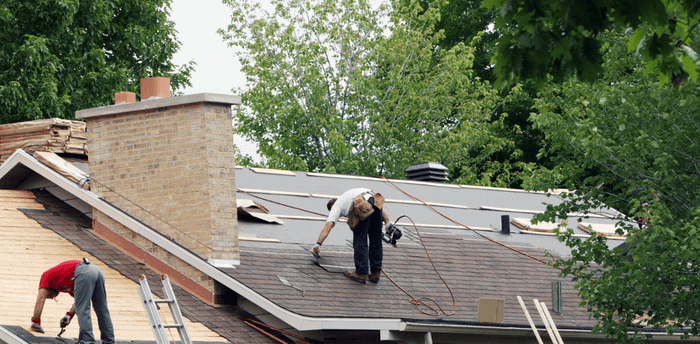You’re probably wondering how long that roofing project is going to take, right? You want to know exactly how long it takes for roofing project timelines in California, from start to finish. Nobody wants a crew working above their heads longer than necessary.
Roofing projects aren’t just about slapping on some shingles. You see, several things come into play, including weather conditions, the complexity of the job, and even what roof materials are being used. This blog gives you all you need to know about what you need when thinking about roofing project timelines in California.
When planning your new roof in California, figuring out how long it will take is essential. Also, each step in the process can add days or weeks to roofing project timelines in California. Weather delays can cause some projects to run long, but you can make sure that it goes according to schedule.
Table of Contents
Key Factors Affecting Roofing Project Timelines in California
Knowing what can impact your timeline will help you avoid delays. Ignoring these factors can lead to significant scheduling disruptions. It is helpful to factor in the time of year that roofing work takes place, especially since California’s diverse regional climates, ranging from desert to alpine, significantly impact roofing project timelines.
Material Selection
Different roof materials need varying amounts of time to install. So, it’s something to consider. Asphalt shingles are popular for their relatively fast installation due to their ease of handling and application.
Tile, slate, and wood shakes need specialized skills, therefore these projects usually take longer. When planning, think about how the material can affect the project length.
Roof Size and Complexity
The size and complexity of a roof are primary factors determining project length. Larger roofs necessitate increased labor hours. Additionally, complex designs, including steep slopes, numerous angles, and features such as skylights or chimneys, demand specialized skills and meticulous attention, resulting in longer completion times.
Weather Conditions in California
California’s diverse regional climates significantly impact roof repair or replacement project timelines. Understanding these variations is essential for accurate scheduling.
| Region | Common Weather Conditions | Impact on Roofing |
| Desert | Intense heat, occasional flash floods | Extreme heat affects material handling; flash floods cause delays. |
| Cool Interior | Mild summers, cold winters | Winter conditions like rain can delay work. |
| Highland | Snow, cold temperatures | Snow and ice make roofing hazardous and slow. |
| Steppe | Dry, hot summers, cool, wet winters | Rain can interrupt roofing in the winter. |
| Mediterranean | Warm, dry summers, mild, wet winters | Winter rain causes scheduling issues; high summer temperatures necessitate safety precautions. |
California’s varying microclimates, influenced by factors like elevation and proximity to the coast, create diverse weather patterns. These regional differences necessitate careful planning. Rain significantly disrupts schedules across the state, and high summer temperatures require additional safety measures. Consulting with experienced local roofing contractors, who are familiar with specific regional weather patterns, is crucial for minimizing potential disruptions.
Unforeseen Repairs and Permit Requirements
During roof removal, roofing crews may uncover hidden structural damage, such as rotted decking or compromised supports. This discovery can transform a standard roofing project into a more extensive reconstruction effort. Addressing these structural issues is essential before a new roof can be installed.
Such repairs often necessitate obtaining city permits, which can introduce delays to the project timeline. While some permits are processed efficiently, more complex repairs may require detailed inspections and approvals, extending the project’s duration. It is crucial to factor in potential permit delays and the time required for unforeseen structural repairs when planning a roofing project.
Typical Roofing Project Phases and Timeframes

Effective project management involves dividing the roofing process into clearly defined phases, which facilitates communication and transparency. This phased approach helps alleviate homeowner anxiety by providing a structured overview of the work. Accurate scheduling, with adequate time allotted for each step, is critical to maintain project momentum and minimize disruptions.
Initial Consultation and Estimate
The roofing project begins with an initial consultation, during which reputable contractors thoroughly inspect the existing roof and carefully document any structural concerns raised by the homeowner. Addressing all homeowner needs and concerns during this phase is crucial for minimizing later changes. Accurate measurements taken during the estimate process are essential for providing a precise quote and ensuring project completion within the agreed-upon budget and timeframe.
Material Selection and Ordering
Selecting the roofing material, which reflects the homeowner’s aesthetic preferences, marks an important stage in the project. Once the chosen materials are confirmed, the procurement process begins. Material availability and delivery timelines significantly influence the project schedule.
Certain specialized roofing materials may require extended lead times, which must be factored into the overall project timeline. It is essential to verify delivery schedules and material availability to prevent unexpected delays.
Roof Removal
Prior to roof removal, protective ground coverings are installed to safeguard the surrounding property. The removal process involves systematically dismantling the existing roofing materials, such as aged asphalt shingles. This process generates significant noise.
Most reputable roofing contractors ensure prompt waste removal, maintaining a clean worksite. However, the duration of debris removal may vary depending on the project’s size and the crew’s capacity, potentially spanning multiple days. The roof removal team will meticulously dismantle all roofing components.
Decking Inspection and Repair
A thorough inspection of the roof decking is conducted to identify any signs of weakness or damage. Weak or damaged sections must be replaced with sound materials to ensure secure shingle attachment. This inspection also allows for the detection and remediation of water damage or decay before the new roofing system is installed.
Addressing any underlying structural issues at this stage is essential for the long-term durability and safety of the roof and building. Any necessary repairs must be completed meticulously to ensure optimal roof performance.
Underlayment Installation
A critical function of roof installation is to provide a reliable moisture barrier. Roofing crews install underlayment, a waterproof membrane, prior to flashing installation. This barrier protects the roof from water intrusion, particularly during severe weather conditions common in many regions of California.
Professional installers meticulously apply the underlayment to ensure a proper seal before installing the new shingles. This step is essential for maximizing the roof’s longevity and performance.
Flashing Installation
Flashing, a critical component of roof waterproofing, is installed at vulnerable points such as chimneys, vents, and other roof penetrations. Proper sealing around these joints is essential to prevent water intrusion.
The absence of properly installed flashing significantly increases the risk of future water leaks. Effective flashing installation ensures optimal water runoff, protecting the building’s integrity for years to come.
Shingle Installation
Proper shingle installation is crucial to prevent wind uplift and ensure a watertight roof. Roofing professionals meticulously align each course of shingles across the entire roof surface. This careful application provides essential protection against water intrusion and hail damage.
Experienced roofing companies are selected for their proven ability to complete projects safely and in compliance with building codes. Shingle installation typically represents a significant portion of the overall project timeline. Contractors perform thorough quality checks to ensure adherence to specifications.
Final Inspection and Cleanup
Reputable roofing contractors conduct a comprehensive final inspection of the completed roof. They prioritize maintaining a clean and debris-free worksite throughout the project, with a thorough cleanup upon completion. A clean worksite contributes significantly to homeowner satisfaction.
Professional waste removal and meticulous site cleanup are hallmarks of quality roofing services. Crews ensure all debris is removed, leaving the property in pristine condition following the roof installation. This commitment to cleanliness extends from the ground level to the rooftop, ensuring a safe and aesthetically pleasing result for years to come.
Expediting Your Roofing Project
To minimize delays and ensure efficient project completion, maintain consistent and open communication with your roofing contractor. This is especially crucial for commercial roofing projects, which often involve complex logistics and larger-scale operations. Discuss potential challenges and address concerns proactively, both before and during the project. Prompt decision-making and clear communication are essential, particularly when changes arise.
Maintain flexibility and responsiveness to potential supply chain disruptions. Having alternative material options readily available can mitigate delays caused by unexpected shortages, a factor that can significantly impact commercial roofing timelines.
Adequate financial planning is crucial. Explore financing options, such as loans, to ensure timely material procurement and prevent project delays due to cash flow issues. This is particularly relevant for commercial roofing, where material costs can be substantial.
Prioritize informed decisions that balance expediency with long-term quality and investment value. Early consideration of financing options will facilitate a smooth and uninterrupted project flow from start to finish. Timely project completion contributes to increased homeowner satisfaction, and is equally important when dealing with the time sensitive nature of commercial roofing projects.
Permits and Building Regulations in California
Building permits are essential in California to ensure all construction projects comply with local and regional building codes, safeguarding public safety and structural integrity. Contacting municipal building departments prior to project commencement is crucial to determine applicable regulatory requirements and avoid potential penalties during the final inspection. Compliance with building codes should be maintained throughout the roof removal and installation process.
Building regulations and project timelines can vary significantly across California due to regional climate differences and local ordinances. Confirming adherence to energy efficiency standards is also vital to prevent project delays. Roofing contractors are responsible for understanding and adhering to all relevant regulations, including the proper filing of documentation to ensure future projects meet current legal requirements.
Selecting a Roofing Contractor in California
Choosing a local roofing contractor with extensive experience is crucial for successful projects in California. Local expertise ensures familiarity with regional building codes and construction standards. Seek referrals from trusted sources, review online testimonials, and carefully evaluate the contractor’s work history and certifications during the interview process.
Inquire about warranty packages and insurance coverage. Verify the contractor’s licensing and credentials with relevant local organizations. Local contractors are often more efficient due to their understanding of California’s fluctuating weather patterns and established relationships with local suppliers.
Understanding California’s unique challenges, such as wildfires, landslides, and seismic threats, underscores the importance of hiring local professionals. Local contractors are better equipped to handle these specific conditions, potentially reducing installation costs and ensuring compliance with local building codes. Request references to assess the contractor’s performance and ensure timely project completion. Promptly report any roofing issues to the contractor to facilitate timely repairs.
FAQ Section
How does weather affect roofing project timelines in Southern California?
Southern California’s climate, particularly its periods of rainfall during winter, can influence roofing project timelines. Rain can cause work stoppages, potentially extending the project. It is advisable to work with a roofing contractor who possesses a thorough understanding of local weather patterns.
What permits are typically required for a roof replacement in Los Angeles?
In Los Angeles, a building permit is usually required for a roof replacement. Your roofing contractor should handle the process of obtaining permits to ensure the project complies with California building codes.
Can I get a free estimate for a roofing project in San Diego?
Yes, many roofing contractors in San Diego offer complimentary estimates for roofing projects. This process typically includes an initial consultation and thorough site inspection to determine the project’s scope.
What are the common red flags when hiring a roofing contractor?
Common red flags include a lack of proper licensing, insurance, or references. Be cautious of contractors who demand full payment upfront or those who pressure you into making quick decisions, potentially compromising quality.
How can structural damage affect the roofing project timeline?
The identification of structural damage during a roof inspection will necessitate additional time for repairs, thus extending the project timeline. Repairs to decking or support structures will increase the overall project duration.
How do roofing material choices impact energy efficiency?
The type of roofing materials selected can significantly affect energy efficiency. Cool roofs, for example, reflect sunlight and reduce heat absorption, leading to lower energy bills.
Are there financing options available for roofing projects in California?
Yes, many roofing companies offer financing options to help homeowners manage the cost of a new roof. These options can include loans or structured payment plans.
What roofing maintenance is required after a new roof installation?
Regular roofing maintenance, such as clearing debris and inspecting for damage, can prolong the life of your new roof. It is advisable to schedule routine inspections with a roofing professional.
How can I ensure the structural integrity of my new roof?
Employing a licensed and experienced roofing contractor is paramount to ensuring structural integrity. Furthermore, regular inspections and timely repairs will contribute to maintaining the roof’s condition.
What should I know about warranties for roofing systems?
It is essential to thoroughly understand the warranty coverage pertaining to both materials and workmanship. A comprehensive warranty provides essential protection for your investment.
Conclusion
Navigating roofing project timelines in California requires careful consideration of various factors. Understanding the influence of regional climates, material selection, and contractor expertise provides homeowners with a comprehensive overview of potential project durations. Thorough planning and the selection of qualified professionals are essential for efficient project execution, resulting in durable, weather-resistant roofs that provide long-term value in California’s diverse climate zones.



0 Comments